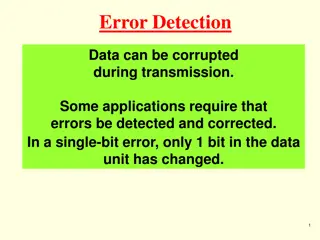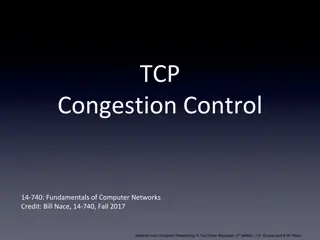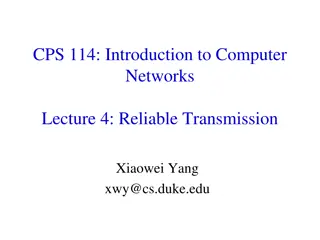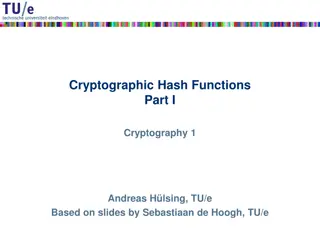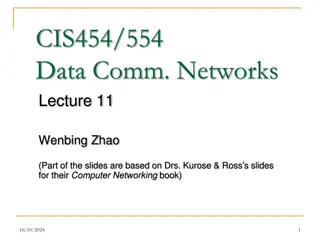Understanding Error Detection and Checksum Methods
Data transmission can lead to errors, with single-bit errors and burst errors being common. Error detection methods such as checksum play a vital role in ensuring data integrity. Learn about checksum, one's complement arithmetic, and examples illustrating error detection techniques.
1 views • 13 slides
Samsung EX-LINK Guide for BEN Series LFD Q2 2019
EX-LINK Control is a Samsung industry standard for RS232C control protocols, utilized in the BEN series of Commercial LFD products. The guide covers Samsung EX-LINK code structure, checksum calculation, connector pin-outs, and more. Learn how to format commands, calculate checksums, and adapt pinout
6 views • 6 slides
TCP Congestion Control Basics
This content covers the basics of congestion control in TCP, including aspects such as reliable data transfer tools, checksum usage, and receiver feedback. It's based on material from the book "Computer Networking: A Top Down Approach, 6th edition" by J.F. Kurose and K.W. Ross, and a lecture by Bill
2 views • 81 slides
Understanding Reliable Transmission in Computer Networks
Explore the essentials of reliable transmission in computer networks, including error detection methods like parity, checksums, and error-correcting codes. Learn about clock-based framing, SONET links, and synchronization techniques for data integrity. Dive into topics such as two-dimensional parity
0 views • 39 slides
Understanding Cryptographic Hash Functions
Cryptographic hash functions play a crucial role in various aspects of security, including integrity protection, checksum generation, password hashing, digital signatures, and more. They are designed to efficiently convert input data of arbitrary length into fixed-length output, aiding in tasks like
0 views • 32 slides
Lessons in Network Reliability and Systems Design
Exploring the importance of end-to-end reliability in network communication, the examples highlight the pitfalls of assuming network perfection. From checksum failures in file copying to voting system flaws, the need for robust systems and user verification becomes evident. Emphasizing the challenge
0 views • 21 slides
Understanding IPv4 Networking Fundamentals
Explore crucial concepts in IPv4 networking, including addressing, protocol formats, network layer functions, datagram structure, header details, time-to-live considerations, and checksum verification. Delve into the intricacies of Internet Protocol version 4 to grasp the foundations of data communi
0 views • 31 slides
